With recent events like COVID-19 and the restrictions that came along with it, retail marketing on an omnichannel level has become increasingly more important for consumer retention and overall company success.
In 2020, online grocery sales saw a 103% year-over-year increase and are projected to account for 10% of the overall market by 2025. Supermarkets must take advantage of FMCG marketing strategies and the omnichannel approach to ensure an increase in their YOY revenue as consumers place value on convenience and access.
Table of Contents
What FMCG means
FMCG stands for fast-moving consumer goods, which are identified as frequently purchased goods that have a short shelf life due to being perishable or in high demand. These products are often priced low and sold in high quantities. FMCG can be separated into four main categories: food and beverage, personal care, health care, and home care.
The 4 key FMCG marketing strategies
To develop customer loyalty and ultimately grow revenue, businesses can follow these FMCG marketing strategies.
Key FMCG marketing strategy #1: Build a strong brand positioning (product)
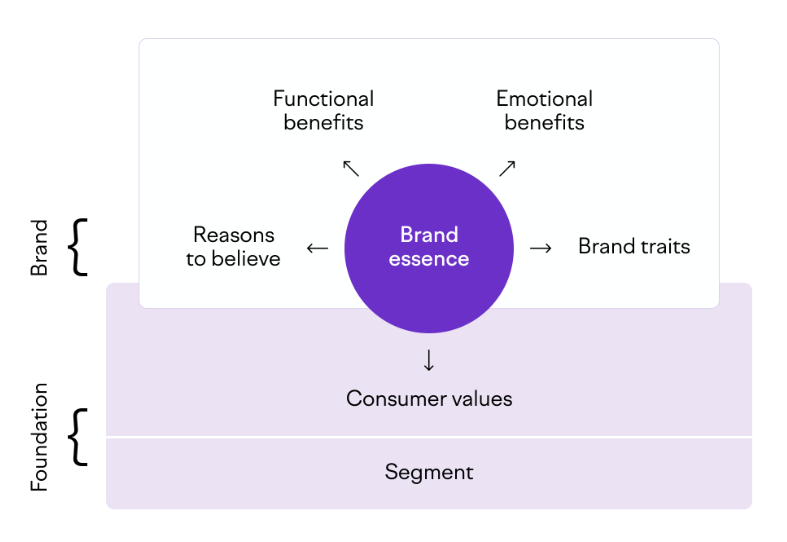
The FMCG industry is filled with brands selling the same products in similar environments. With various supermarkets laid out across a given city, this furthers the importance of creating and implementing a strong brand purpose — a company’s reason for existing beyond profit-making — throughout the in-store and online experience as a way of standing out among the competition.
Things to consider when implementing a brand purpose
- The brand purpose should differentiate the business from competitors, being sure to highlight the brand’s strongest selling points (for example, organic goods, lowest prices, or sustainable production).
- The brand colors, fonts, messages, and graphics should be consistent across all channels.
- The brand tone of voice should be established and consistent across all channels.
- As consumer behavior and societal changes occur, the brand purpose should evolve to meet the needs of consumers and connect with them on relevant interests.
A brand purpose is a company’s way of speaking to its target audience about what is important to them. A study shows that 63% of consumers prefer to buy goods and services from companies whose purpose reflects their values and beliefs. A company should allow its brand purpose to evolve with the times, being sure to make a clear stance that shows consumers it stands with them on what is important.
Sainsbury’s, the second-largest supermarket chain in the U.K., is a prime example of the importance of a company’s ability and willingness to adapt and evolve its brand purpose. It found its success by using an effective marketing strategy that involved a shift in its brand positioning. This supermarket chain changed its slogan from “Live Well for Less” to “Helping Everyone Eat Better” when it saw the importance of health and wellness to its target consumer.
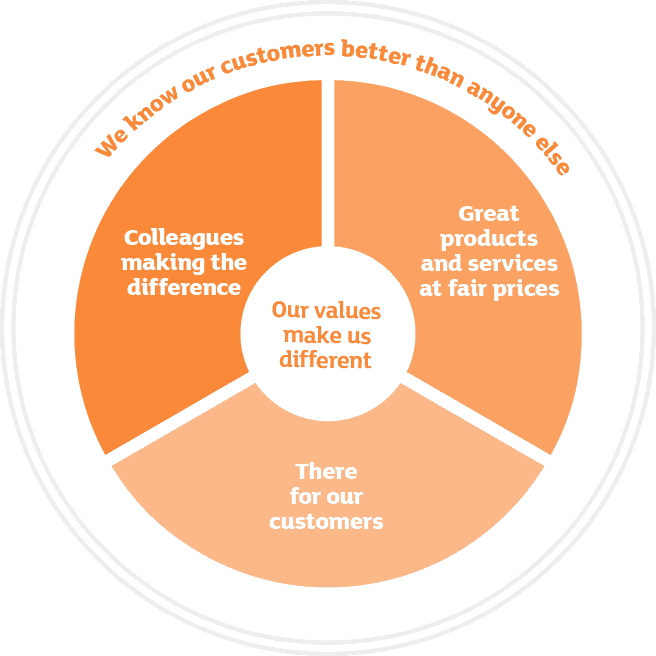
Although low prices will always be an appealing factor for for-profit companies, Sainsbury’s recognized that its customers were more concerned with healthy, sustainably produced goods and made sure its brand purpose reflected those values. Sainsbury’s attributed much of its success as a supermarket to this change.
When creating an effective FMCG marketing strategy, retailers should prioritize their brand purpose, as it can make or break a customer’s perception of the company and greatly affect customer loyalty.
Key FMCG marketing strategy #2: Optimize your pricing by investing in private labels (price)
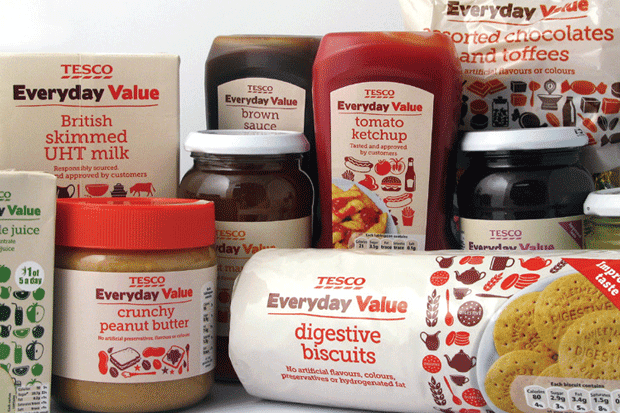
Creating a pricing strategy is essential for the FMCG industry, as it allows supermarkets and grocery stores to attract consumers with competitive prices.
Pricing tactics to consider for an FMCG marketing strategy
- Invest in private labels (own-brand) and market above other brands in-store and online.
- Create a rewards program that offers savings as an incentive for purchasing from the private label.
- Engage in penetration pricing, offering a lower price at a product’s initial launch, to target a specific market.
- Utilize promotional pricing, which temporarily lowers the price of a given product to attract consumers for future purchases.
- Offer online pricing that matches in-store pricing.
- Offer online incentives like free shipping to encourage online shopping activity from consumers.
With inflation on the rise, 60% of consumers are paying more attention to the prices they spend on their goods, with nearly a quarter of them planning on switching to private labels to save money. When a company invests in a private label and engages in other effective pricing strategies, it can get ahead of the competition and establish customer loyalty.
Key FMCG marketing strategy #3: Design an excellent online and in-store customer journey (place)
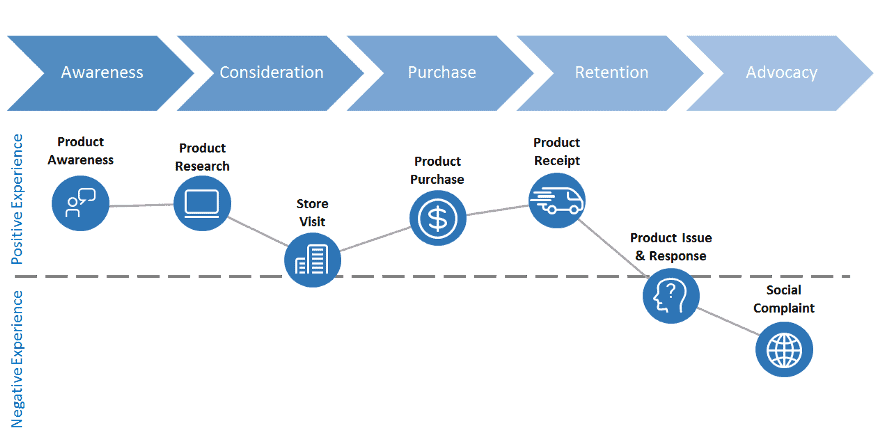
The customer journey is identified by the steps a customer takes that guide them to complete a purchase either in-store or online — and can be enhanced by adjusting the environment, points of contact, and ease of transaction for consumers.
Tips for creating an effective online and in-store customer journey
- Emphasize excellence in customer service to ensure that consumers are being taken care of and issues are being resolved properly.
- Create an easy-to-navigate in-store layout.
- Create an online user experience that is easy to follow.
- Ensure a balance of consumer freedom and assistance. Allow the consumer to shop without constant interruption while also having assistance available when needed in both the in-store and online sectors.
- Create multiple touchpoints with the consumer to create customer relationships (for example, greeting at the store entrance, assistance while shopping, or a follow-up email after the purchase).
For 65% of U.S. customers, an excellent shopping experience is more influential than advertising. When building effective FMCG marketing strategies, it is vital to go beyond traditional advertising and marketing tactics, and focus on the customer experience both online and in-store.
Key FMCG marketing strategy #4: Invest in omnichannel marketing activities (promotion)

Omnichannel marketing is on the rise as it allows consumers to seamlessly shop and purchase goods through multiple integrated channels such as brick-and-mortar stores, e-commerce websites, social media, and mobile.
Tactics for utilizing omnichannel marketing in your FMCG marketing strategies
- Use all mediums to create brand awareness.
- Experiment with new, unlikely channels and technologies (such as social commerce, live streaming, and TikTok sales).
- Use all mediums to add a human element to the marketing strategy by encouraging conversations with the consumer.
- Utilize mediums as a tool for data collection on consumer behavior.
- Use mediums as a way to personalize shopping for customers, as 48% of consumers want product suggestions that match their preferences and 52% want personalized promotions.
With leading FMCG retailers like Amazon using the omnichannel approach, supermarkets are being encouraged to integrate their in-store processes with their online presence. This can drive an increase in YOY revenue as the e-commerce market grows in an attempt to keep up with consumers’ growing desire for contactless shopping.
Other effective supermarket marketing strategies to help you meet your yearly goals
Diving deeper into the FMCG marketing mix — product, price, place, and promotion — allows retailers to lock in an effective FMCG marketing strategy and ensures FMCG marketing best practices are in place.

FMCG marketing strategy #5: Create diversity among your products
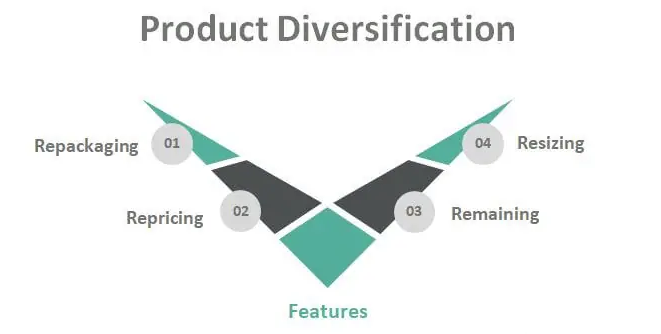
Product diversification is when a company introduces new products to its market to achieve higher sales volume, obtain a competitive edge, and drive new traffic.
The three types of product diversification
- Concentric diversification, the introduction of similar products, can be achieved by supermarkets by adding organic options of produce, flavor variations, color variations, and different brands.
- Horizontal diversification is the introduction of new and unrelated products to the existing consumer. Supermarkets can offer reusable produce bags or produce cleaning solutions.
- Conglomerate diversification is the introduction of completely unrelated products or services in the effort to attract new consumers. Supermarkets can add clothing sections, for example, to achieve this diversification.
Product diversification is important to consider when a business wants to drive new traffic or retain existing customers, as it allows for greater convenience for consumers. When an FMCG company is aiming to increase its YOY revenue, product diversification ensures that it will have the resources it needs to satisfy every passing consumer and create/strengthen loyalty with new and existing customers.
FMCG marketing strategy #6: Build and optimize your supply chain carefully

The supply chain is the network between the company and its suppliers to distribute a product to the consumer.
Things to consider when it comes to supply chain management
- Invest in a high-quality supplier.
- Emphasize the importance of FMCG best practices with suppliers (first-expiry-first-out, for example).
- Utilize a marketing strategy that emphasizes the quality of products to consumers, as 53% of consumers prefer quality over price.
- Create a supply chain that is congruent with the brand purpose.
- Create open lines of communication with the suppliers to ensure a smooth distribution process.
Creating a supply chain is more than finding a means of receiving and distributing goods to consumers. This is an FMCG retailer’s opportunity to market its high-quality products and differentiate itself from the competition. Supermarkets can increase their YOY revenue by providing higher-priced products to consumers who are willing to pay for fresh goods that are sustainably produced.
FMCG marketing strategy #7: Build a local community

Research shows that 38% of consumers reported having more than four grocery stores within a five-mile radius of their home, showing that the competition between FMCG retailers is at an all-time high in urban areas. Building a local community allows supermarkets to create customer relationships and trust within their given community, ensuring that consumers will choose their store over the competition every time.
Ways to build a local community as a supermarket
- Host events and training centered on the local community (such as seasonal gatherings or cooking classes for families).
- Create customer loyalty programs that give customers incentives for being repeat shoppers.
- Contribute to a local charity.
- Participate in local events as a vendor or donor.
- Offer assistance to the community in times of turmoil.
- Allow for community events to take place on supermarket grounds (farmer’s markets in the parking lot, for example).
FMCG marketing strategy #8: Prioritize convenience for consumers

In 2019, an overwhelming majority of consumers, 83%, stated that they consider convenience while shopping more important than it was five years prior. It can be assumed that this number has grown exponentially following the pandemic and the changes that retailers made to meet consumer needs safely and efficiently.
Tips for providing convenience to consumers
- Provide curbside pickup.
- Provide a delivery service.
- Allow consumers to shop online and pick up in-store.
- Keep mobile inventory and data up to date to ensure that consumers can find what they are looking for.
- Create an in-store and online shopping layout that speaks to consumer needs (for example, placing convenience items like batteries at the front of the store).
An FMCG marketing strategy that emphasizes the conveniences it provides is essential for surviving in a market that is built to meet consumers where they are, despite the current events happening around them. Giving consumers an easier and quicker way to obtain goods and services is a worthwhile investment and a sure way to retain them as repeat customers in the future.
FMCG marketing strategy #9: Maintain strong crisis management

Crisis management is identified by the strategies used by companies to effectively respond to a sudden negative event.
Things to consider when creating a crisis management strategy
- Provide customers with updated business actions — such as store hour changes — in light of a given crisis.
- Offer acknowledgment of current events using all available mediums.
- Offer support to consumers (like temporarily halting shipping/delivery fees).
When retailers include a good crisis management system in their FMCG marketing strategies, it shows consumers that they can trust the retailer to continue to provide goods and services to meet their needs despite unexpected events. Crisis management builds customer loyalty and is another way of communicating the company’s brand purpose.
Examples of recent crises in the global retail industry:
- Rise of Cyberattacks (post-pandemic) – Interesting resource here
- COVID-19 – Interesting resource here
FMCG marketing strategy #10: Create highly anticipated seasonal promotions

Promotions are a key factor in any successful marketing strategy, as they can account for 10% to 45% of a company’s revenue.
Tips for creating an effective promotions strategy
- Allow for promotions that are truly valuable to consumers, being sure to include highly sought-after goods.
- Analyze consumer behavior following promotions and adjust promotion tactics as needed.
- Market promotions in an anticipatory manner, being sure to provide customers with advanced notice.
- Promotions should reflect the season with relevance (such as offering a discounted price on eggs during Easter).
- Test different types of promotions to find what works best for the company’s client base.
Although there are several creative ways to offer promotions and drive sales, it’s important to consider the effectiveness of promotion tactics. A study done with U.K. supermarkets showed that out of the four most commonly used promotions — coupons, price discounts, samples, and buy-one-get-one-free — only the price discounts proved to be significantly effective. Given this information, supermarkets can adjust their tactics and focus on price discount promotions.
FMCG marketing strategy #11: Utilize omnichannel marketing to better understand consumer behavior and build customer loyalty

A benefit of engaging in an omnichannel marketing strategy is having the ability to learn more about your customer without having to individually survey them.
Ways to learn about consumers using an omnichannel approach
- Utilize mobile apps to analyze consumer purchase history and purchasing behavior.
- Track traffic to specific goods through online shopping mediums and adjust product placement, promotions, and pricing accordingly.
- Use social media as a tool for humanizing the brand, allowing for direct communication between the consumer and the brand.
- Use mobile apps to create a personalized shopping experience for consumers.
FMCG marketing strategy #12: Connect in-store and online shopping experiences
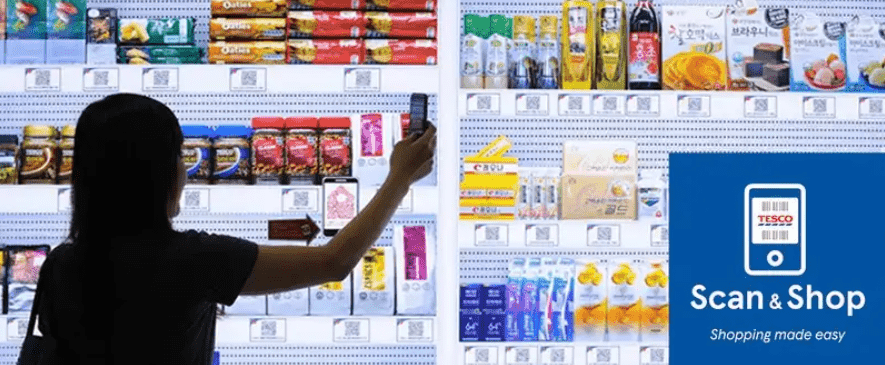
Connecting in-store and online shopping experiences allows consumers to feel known by the brand, and it provides the retailer with a way to personalize shopping experiences for each consumer, thus building customer loyalty.
How to connect in-store and online shopping experiences
- Connect the payment method to a mobile app to allow for digital receipts to be accessible to consumers after shopping in-store.
- Allow consumers to create a customer profile that enables them and the company to track purchases.
- Connect the payment method to an email account, allowing the business to send a follow-up email to the customer directly after a purchase.
- Implement curbside and in-store pickup options for online shoppers.
- Allow digital coupons to be used in-store and physical coupons to be redeemed online.
Creating a seamless connection between the online and in-store shopping experience allows consumers to feel like they are being taken care of and paid attention to on all levels. This FMCG marketing strategy is beneficial to both the customer and the company, as loyalty is important to both parties.
Other insightful FMCG case studies to read
- Tesco Case Study: How an Online Grocery Goliath Was Born
- Sainsbury’s Marketing Strategy: Becoming the Second-Largest Supermarket Chain in the UK
- The Marks and Spencer eCommerce Case Study: 3 Growth Lessons for Retailers
- The Ocado marketing strategy: How it reached the UK TOP50 retailers list
- ASDA’s marketing strategy: How the British supermarket chain reached the top
- ALDI’s marketing strategy: The key growth ingredients of the FMCG titan
- Walmart Marketing Strategy: Decoding the Success of the US Multinational Retailer
- Analyzing Lidl’s Marketing Strategy: How the Discount Supermarket Leader Scaled
One strategy to rule them all: Omnichannel
In a world that has found itself in a balance between human and digital connection, major retailers are finding their success by creating an inviting, consistent, and seamless in-store and online experience for consumers.
Supermarkets have joined the omnichannel sector of marketing and have utilized FMCG marketing strategies to meet their customers where they are and create lasting relationships. This has allowed FMCG retailers to create brand awareness through several mediums. However, retailers must be sure to maintain brand consistency across all mediums to establish authority and meet and surpass their revenue goals.
Navigating the omnichannel sector can be overwhelming, as there are several factors to consider when creating brand presence across platforms. ContactPigeon is one of the very few 360 omnichannel customer engagement platforms that is built specifically for the retail industry and is trusted by reputable brands all over the EU. Book a session today to learn how you can make the most out of your omnichannel marketing strategy.

Let’s Help You Scale Up
Spending time on Linkedin? Follow us and get notified of our thought-leadership content:

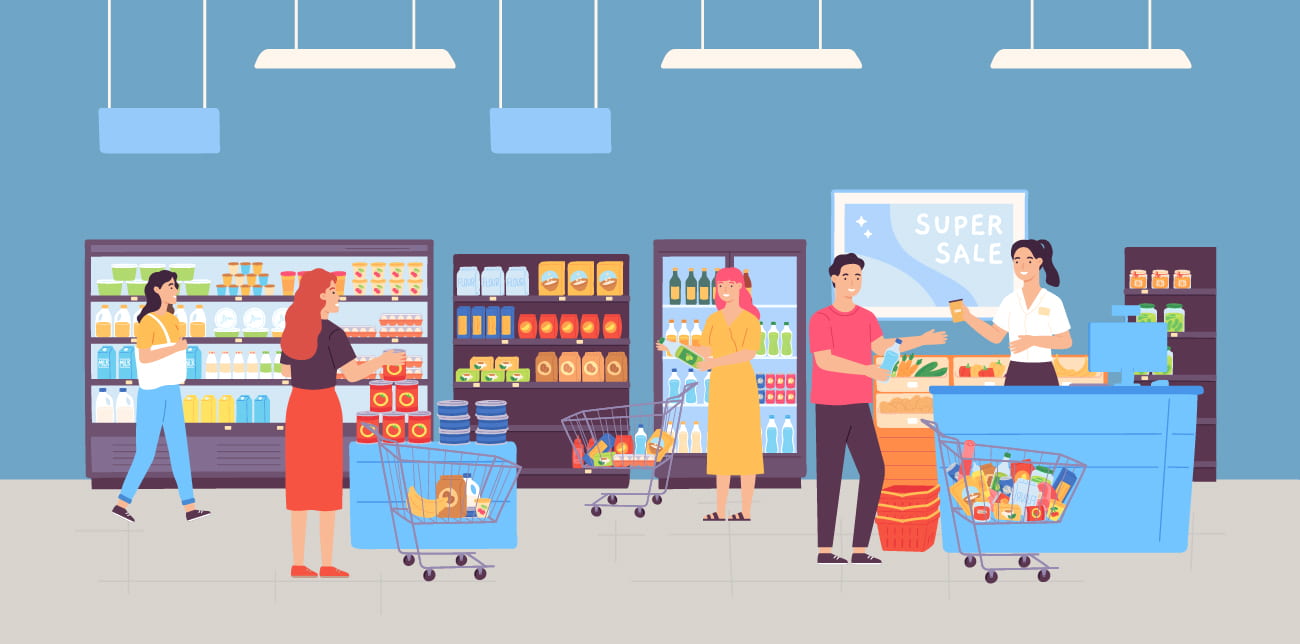

![Benchmarking Growth Strategies of Top Fashion Retailers [Study]](https://blog.contactpigeon.com/wp-content/uploads/2025/11/top-fashion-retailers.jpg)